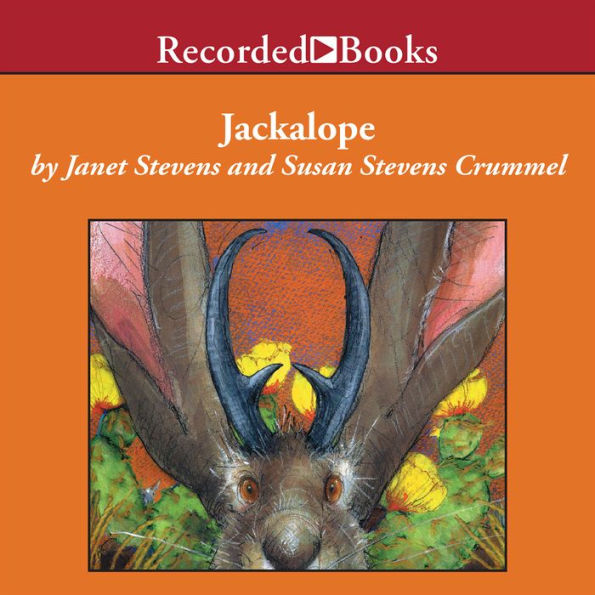bn.com
The Barnes & Noble Review
Janet Stevens and Susan Stevens Crummel -- the team that brought you And the Dish Ran Away with the Spoon -- get back together for a rip-roaring tall tale about that mystical creature, the jackalope.
Told by a cowboy hat–wearing armadillo, Jackalope's story is one hilarious romp. When "a very unhappy jackrabbit" from "the land of cactus and cattle" realizes he hates being ordinary, he falls asleep and dreams of having big horns to set himself apart. Of course, he gets his wish from his "Fairy Godrabbit," but when Coyote almost catches him for a snack, he thinks his horns might be hampering his scampering. Unfortunately, Fairy Godrabbit's spell transfers Jack's horns onto her and whets Coyote's appetite again, but when Jack's silly rescue attempt sends Coyote laughing into a river and breaks Fairy Godrabbit's wand, the two become buddies for good.
A kooky yarn that will keep kids chuckling, Jackalope hits the mark with its down-home language and silly characters. Stevens's bright artwork reflects the same humor as her illustrations for Epossumondas, while Crummel's rolling words make it zingy. A genuine treat for story time. Matt Warner
Kirkus Reviews
What should be a whimsical tale of the fictitious desert critter found on so many postcards in the Southwest instead becomes a labored slog through a confused tall-fairy-tale landscape. It begins and ends on the endpapers, as a genial armadillo approaches the reader, sets up a folding chair, and launches into the story. This frame produces a series of sub-frames as the armadillo takes the role of balladeer, introducing segments of his story with cowboy doggerel. It turns out that the famed horned hare began life as a perfectly, and unhappily, ordinary jackrabbit. Various conversations with his magic mirror apparently summon his Fairy Godrabbit, a painful punster, who grants him horns and an accompanying Pinocchio-like curse that causes his horns to grow whenever he tells a lie. The meandering tale goes on and on until the armadillo ambles off after the exhausting conclusion. Stevens’s art, a computer-enhanced combination of painting and collage, features her signature energetic line, but here it crosses the boundary into frenetic. As does the narrative itself: line and bright colors cannot sustain a text that simply does not seem to know when to end. Crummel and Stevens’s previous collaborations (And the Dish Ran Away with the Spoon, 2001, etc.) have shown a distinct tendency toward self-referential narrative; this offering, with its promising concept, carries this style into self-indulgent. (Picture book. 5-8)
From the Publisher
The nutty plot, sympathetic characters, and handsome illustrations make for a roaring good time.”—School Library Journal “The American western legend of the ‘jackalope’ reaches new heights of silliness in the hands of the Stevens sisters.”—Booklist —



